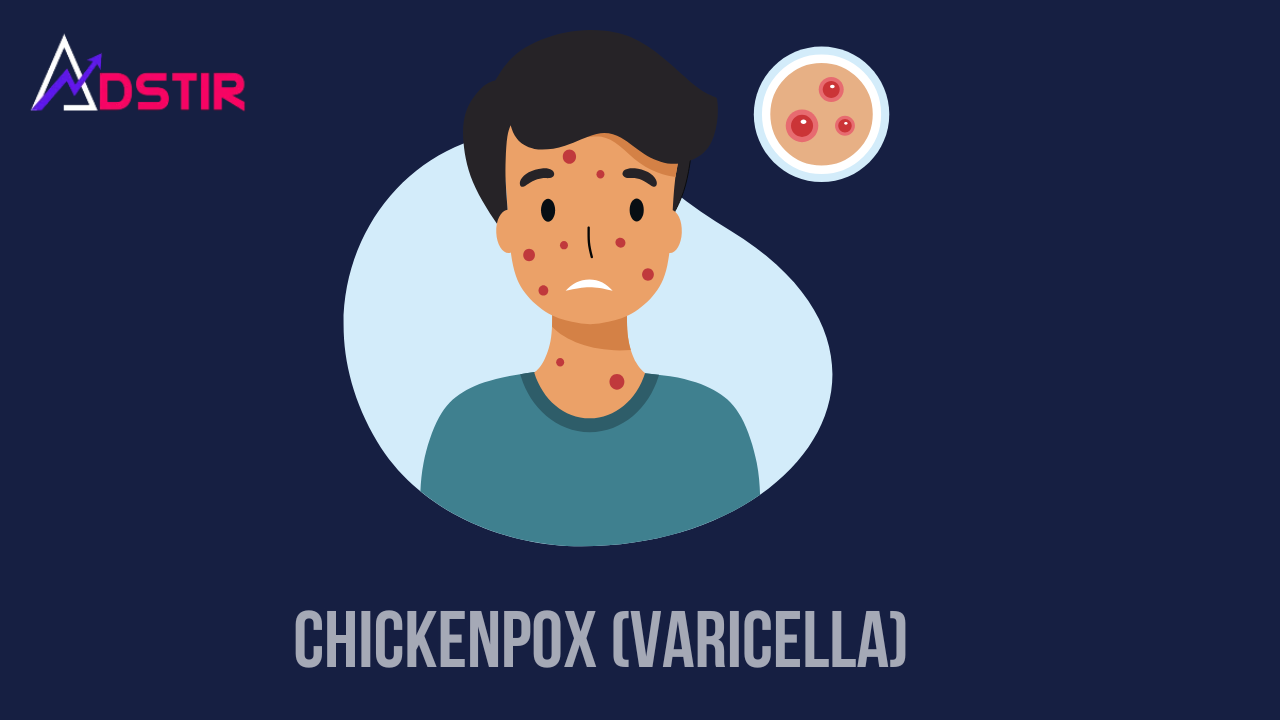Chickenpox (varicella): Symptoms, treatments and more – Chickenpox, also known as varicella, is a highly contagious viral infection caused by the varicella-zoster virus (VZV). It is most common in children but can affect people of all ages. Although chickenpox is generally mild in healthy individuals, it can cause complications in newborns, pregnant women, and people with weakened immune systems.It is easily communicable from person-to-person by direct contact or through the air by coughing or sneezing. Chickenpox occurs in all parts of the world. In 2013, there were 140 million cases of chickenpox and shingles worldwide.
Causes of Chickenpox
Chickenpox is caused by the varicella-zoster virus, which spreads easily through direct contact, respiratory droplets (coughing or sneezing), or by touching surfaces contaminated with the virus. Once a person is infected, the virus remains in their body for life and can reactivate later as shingles (herpes zoster).
Symptoms of Chickenpox
Symptoms usually appear 10 to 21 days after exposure to the virus. The illness progresses in stages:
Early Symptoms
In initial stage (1 to 2 daysbefore rash) a person may experience symptoms,such as,fever,loss of appetite and tiredness, headache and muscle pain.
Rash and Blisters (3-7 Days)
- Small red spots appear on the face, chest, and back before spreading to other areas, including the scalp, arms, and legs.
- The spots turn into itchy blisters filled with fluid.
- The blisters eventually break and form scabs, which heal within a week.
- The rash usually appears in waves, meaning new blisters form as older ones start drying.
Recovery Stage (7-14 Days)
- Scabs form over the blisters, and the itching reduces.
- The person is contagious until all blisters have scabbed over.
- Some people may develop light scars, but these usually fade over time.
How Does Chickenpox Spread?
Chickenpox spreads easily from person to person. A person with the virus is contagious from 1-2 days before the rash appears until all blisters have dried up. The virus can spread through:
- Direct contact with the fluid from blisters.
- Respiratory droplets when an infected person coughs or sneezes.
- Touching contaminated objects (such as clothing, bedding, or toys).
Who Is at Risk of Chickenpox?
People who have never had chickenpox or the chickenpox vaccine are at higher risk of infection. The following groups are more vulnerable to complications:
Infants who are too young for vaccination.
- Pregnant women, as the virus can cause birth defects or severe illness.
- People with weakened immune systems, including those with cancer, HIV/AIDS, or on immune-suppressing medications.
- Older adults, as they may develop complications like pneumonia or shingles later in life.
Treatment for Chickenpox
Chickenpox usually does not require medical treatment in healthy individuals, but symptoms can be managed at home.
Home Remedies and Symptom Relief
1. Relieve Itching
- Apply calamine lotion to soothe the skin.
- Take an oatmeal bath to reduce itching and irritation.
- Wear loose cotton clothing to avoid skin irritation.
2. Reduce Fever and Discomfort
- Use acetaminophen (paracetamol) to reduce fever and pain. Avoid aspirin, as it can cause Reye’s syndrome, a rare but serious condition.
- Drink plenty of fluids to stay hydrated.
- Get plenty of rest to help the body recover.
3. Prevent Scratching
- Keep fingernails short to prevent skin infections from scratching.
- For children, wear mittens or gloves at night to avoid scratching during sleep.
Antiviral Medications
Doctors may prescribe antiviral medications like acyclovir in severe cases, especially for:
- Adults and teenagers
- Pregnant women
- People with weakened immune systems
Prevention of Chickenpox
1. Vaccination
The varicella vaccine is the most effective way to prevent chickenpox.
- It is typically given in two doses:
- First dose: 12–15 months of age
- Second dose: 4–6 years of age
2. Avoid Contact with Infected Individuals
If you are not immune, avoid close contact with people who have chickenpox until they are no longer contagious.
3. Good Hygiene Practices
- Wash hands frequently with soap and water.
- Disinfect surfaces and objects that may carry the virus.
- Cover your mouth and nose when coughing or sneezing.
4. Boost Immunity
Maintain a healthy lifestyle to support your immune system, including a balanced diet, regular exercise, and adequate sleep.
When to See a Doctor
Most cases of chickenpox can be managed at home. However, medical attention is needed if:
- Constant fever more than 4 days or goes above 102°F (39°C).
- The rash spreads to the eyes.
- The blisters become infected (red, swollen, or filled with pus).
- The person has trouble breathing or severe headaches.
- The infected person is pregnant, a newborn, or has a weakened immune system.
Conclusion
Chickenpox is a common childhood illness that, while usually mild, can cause complications in some cases. Chickenpox is a contagious illness caused by the varicella-zoster virus (VZV) that causes a highly itchy rash. Historically, most people have gotten it in childhood. If people get it as adults, they may be at risk for more serious symptoms and complications.It spreads easily, but vaccination is the most effective way to prevent it.
